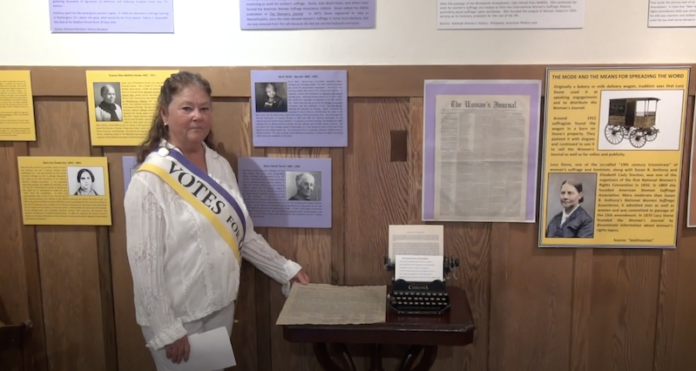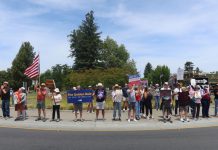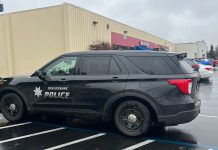
Virtual tour available while museums are closed due to state health order
Across the country, groups have been commemorating the 100th anniversary of the suffrage movement by marching, having sew-ins, holding pre-pandemic gatherings and more in the hope of highlighting the journey that afforded women the right to vote. The Western Sonoma County Historical Society’s West County Museum is seeking to do just that in its “Suffrage Headquarters” exhibit.
While the exhibit can’t open as scheduled due to the state health order that doesn’t allow museums located in counties in the ‘purple tier’ of its COVID-19 tracker to be open, the historical society has put together a video tour of the exhibit, which covers the suffrage movement.
The exhibit, curated by Mary Dodgion, is part of a countywide effort celebrating the 100th anniversary of the 19th Amendment, which was ratified in August of 1920 and states that no citizen will be denied the ability to vote based on their gender.
“We started almost a year and a half ago. The idea was to gather as much information about people and places that had to do with the suffrage movement. What they first thought was, ‘Let’s get the information together and find out if they’re buried and if they’re buried in our local areas, we can honor them at the local cemeteries,’” Dodgion said. “From there it evolved into writing biographies of the women and how they participated in the suffrage movement.”
In addition to writing biographies of the women, Dodgion also researched local places that were used as hubs for local suffrage movements. Locally, she wrote a piece about the role that Sebastopol’s Janssen Hall played in the movement.
Also included in the “Suffrage Headquarters” exhibit are suffrage artifacts on loan from Michael Carnacchi, who, according to the video tour of the exhibit, collects ephemera because he likes having a physical connection to prominent people and moments in history.
Included in Carnacchi’s collection is a check on letterhead from the National American Woman Suffrage Association signed by Susan B. Anthony and Alice Stone Blackwell, an 1897 copy of “The Arena” magazine, which has an essay written by Anthony, as well as other historical pieces.
“I love Michael Carnacchi’s ephemera that he loaned us, and I think my favorite thing that he loaned us was the original Women’s Journal newspapers. What I liked about them was that almost every single article on every page was about suffrage. The newspaper was written just for women but those particular papers had everything to do with suffrage from all across the United States and the globe,” Dodgion said about her favorite pieces of the exhibit. “I liked our local women’s section because there was a lot of research going into that and giving people a look at how things may have happened in Sebastopol.”
When researching for the exhibit, Dodgion said that she was frustrated with how little she could find when it came to women’s voices about the suffrage movement being highlighted in local newspapers.
“I couldn’t find that many women who actually spoke out and said the words ‘suffrage’ or ‘vote.’ There were a lot of women participating, but you didn’t get to hear what they said,” she said.
While everything is up in the air due to the state health order, Dodgion said that, once the museum is able to open to the public, the exhibit will be up for about six months.
In the meantime, those interested in learning more about the exhibit and about local history relating to the suffrage movement can view the virtual tour put on by the Western Sonoma County Historical Society.
“I hope that (museum-goers) will be able to learn about the women’s efforts and that it was one of the longest struggles that happened in the United States,” Dodgion said. “All of those years and all of those women who came before us and died before they actually got to see the results of it. I hope they’re able to understand the importance and the actual struggle that they worked on to get the ability to vote.”








